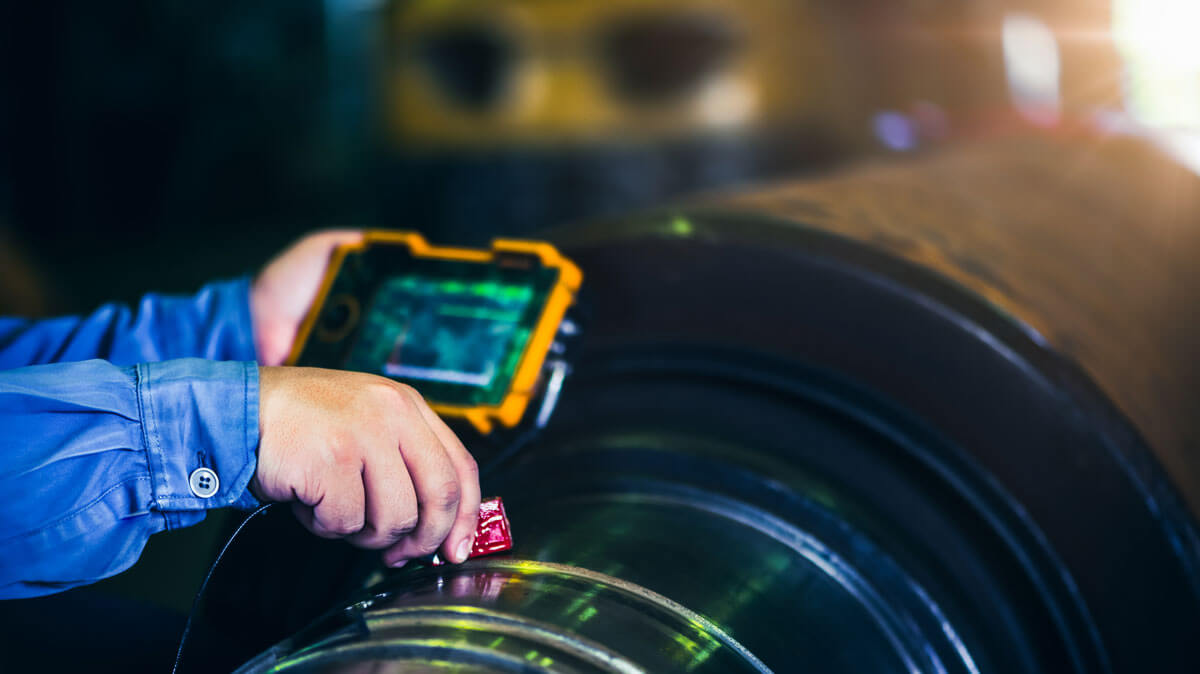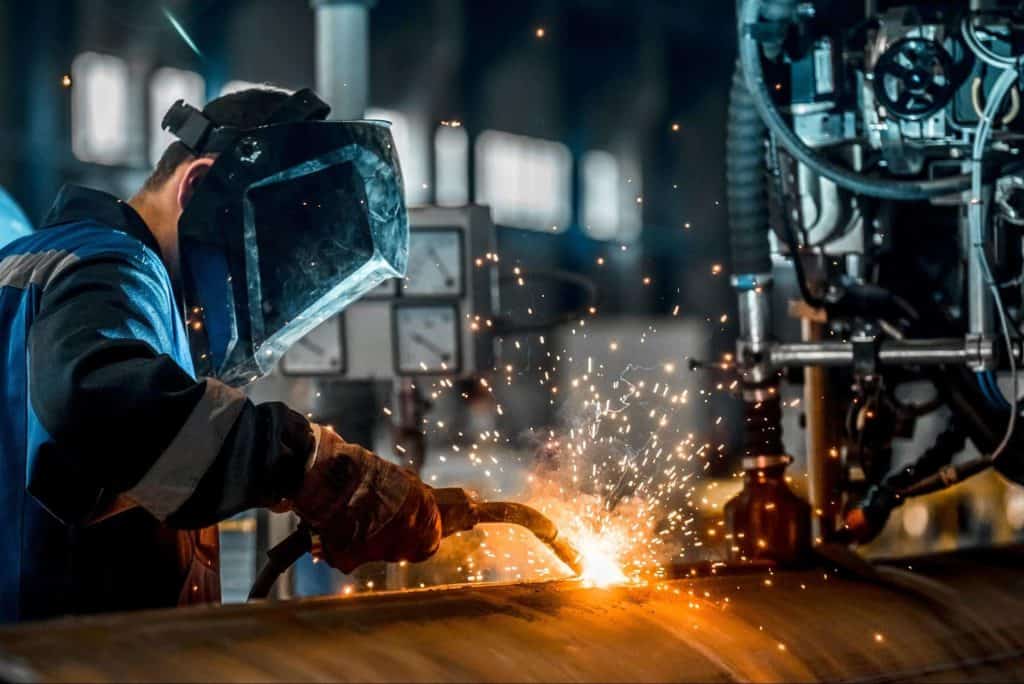Comprehensive Houston Welding Inspection Services for Quality Assurance
Comprehensive Houston Welding Inspection Services for Quality Assurance
Blog Article
A Comprehensive Guide to Comprehending Just How Welding Assessment Functions: Strategies, Specifications, and Best Practices for Quality Control in Steel Fabrication
Comprehending the ins and outs of welding evaluation is vital for keeping the integrity of metal construction. Executing ideal practices can considerably boost top quality assurance steps. The landscape of welding inspection is not without its obstacles.
Significance of Welding Assessment
Although welding is a vital procedure in different industries, its honesty directly affects the security and efficiency of structures and components. Reliable welding inspection is crucial for identifying defects that can compromise the quality and sturdiness of bonded joints. This procedure makes sure adherence to developed requirements and criteria, which are vital for keeping architectural honesty and operational integrity.
Welding inspection offers multiple objectives, consisting of confirming that the welding procedure has been executed correctly, evaluating the quality of products utilized, and verifying that the finished item satisfies governing and industry requirements (Houston Welding Inspection). With rigorous evaluation, prospective concerns such as porosity, fractures, and incomplete fusion can be found early, minimizing and preventing expensive repair services security dangers
In addition, consistent welding evaluations foster self-confidence among stakeholders, including designers, customers, and regulative bodies, by demonstrating a commitment to high quality guarantee. The relevance of welding inspection can not be overemphasized; it is integral not just for compliance with legal requirements but likewise for improving the total performance of welded frameworks. Eventually, a robust welding assessment program is a positive procedure that safeguards versus failings, making sure the long life and dependability of welded elements in their designated applications.
Usual Welding Assessment Techniques

Visual assessment is the initial line of protection, permitting examiners to recognize surface flaws such as fractures, undercuts, or insufficient blend. Radiographic testing makes use of X-rays or gamma rays to reveal inner problems, making it ideal for complex welds. Ultrasonic testing employs high-frequency acoustic waves to spot subsurface problems, supplying precise dimensions of weld stability.
Magnetic bit screening works for ferromagnetic materials, highlighting surface and near-surface discontinuities when fragments are applied to a magnetic field. Alternatively, color penetrant screening utilizes a fluid dye to disclose surface-breaking issues, guaranteeing that even the smallest imperfections are found.
Each technique has its restrictions and toughness, typically demanding a mix of methods for detailed assessment - Houston Welding Inspection. By applying these evaluation methods, quality guarantee in steel construction is attained, making certain that bonded structures satisfy security and performance standards
Market Specifications for Welding

The American Welding Society (AWS) and the American National Standards Institute (ANSI) are 2 noticeable companies that develop welding standards. AWS D1.1, for instance, details the requirements for welding steel frameworks, while AWS D1.2 focuses on aluminum. Internationally, the ISO 3834 standard addresses quality requirements for blend welding, supplying a structure appropriate throughout nationwide borders.

Finest Practices for Quality Control
Quality control in welding is paramount to achieving resilient and risk-free buildings. Applying best methods ensures that every weld meets the needed standards and specs. Developing an extensive quality administration system (QMS) tailored to the details welding job is necessary. This QMS ought to specify roles, duties, and treatments to reduce threats and enhance accountability.
Regular training and certification of welding workers are important for keeping a skilled labor force. Constant education on the current welding techniques and technologies makes sure that examiners and welders are educated concerning existing requirements and practices.
Furthermore, performing pre-weld assessments to assess products and devices can prevent problems before they happen. Houston Welding Inspection. During the welding process, real-time monitoring and paperwork of welding parameters aid identify inconsistencies instantly. Post-weld examinations need to involve thorough assessments utilizing non-destructive testing (NDT) approaches to guarantee the integrity of the welds
In addition, preserving clear communication amongst staff member advertises a culture of quality. Regular audits and evaluations of the welding procedure assistance identify areas for renovation. By adhering to these best methods, companies can achieve optimal quality control, ultimately leading to enhanced safety and efficiency in metal construction projects.
Challenges in Welding Evaluation
Although welding evaluation is important for making sure structural honesty, it provides a variety of difficulties that can complicate the evaluation process. One substantial difficulty is the variability in welding methods and materials used, which can affect the uniformity of weld quality. Various welders may utilize varying approaches, resulting in inconsistencies that inspectors demand to assess and identify.
One more obstacle involves the discovery of defects. Non-destructive screening (NDT) methods, such as ultrasonic and radiographic screening, can be complex and call for competent specialists to analyze results accurately. False positives or downsides can occur, possibly causing pricey rework or jeopardized security.
In addition, the presence of ecological variables, such as temperature level and humidity, can influence the click this link honesty of welds and the effectiveness of examination techniques. Inspectors must likewise navigate the governing landscape, making sure conformity with sector standards, which can differ by territory and application.
Conclusion
To conclude, welding assessment plays a crucial function in making sure the stability and safety of steel fabrication. Using a selection of assessment methods, sticking to well-known market standards, and carrying out effective top quality management methods collectively improve the reliability of welded structures. Despite the difficulties dealt with in the assessment process, a commitment to constant enhancement and adherence to finest techniques can substantially reinforce the quality control structure, promoting higher self-confidence among stakeholders in the welding industry.
Reliable welding evaluation is crucial for identifying defects that can endanger the high quality and toughness of welded joints.Furthermore, constant welding assessments foster self-confidence among stakeholders, consisting of designers, clients, and have a peek at this website regulatory bodies, by demonstrating a dedication to top quality assurance.The American Welding Society (AWS) and the American National Specification Institute (ANSI) are two prominent organizations that develop welding criteria. During the welding procedure, real-time monitoring and documents of welding parameters assist identify incongruities quickly. In spite of the obstacles encountered in the inspection procedure, a commitment to constant enhancement and adherence to ideal techniques can significantly boost the high quality guarantee structure, fostering better self-confidence among stakeholders in the welding market.
Report this page